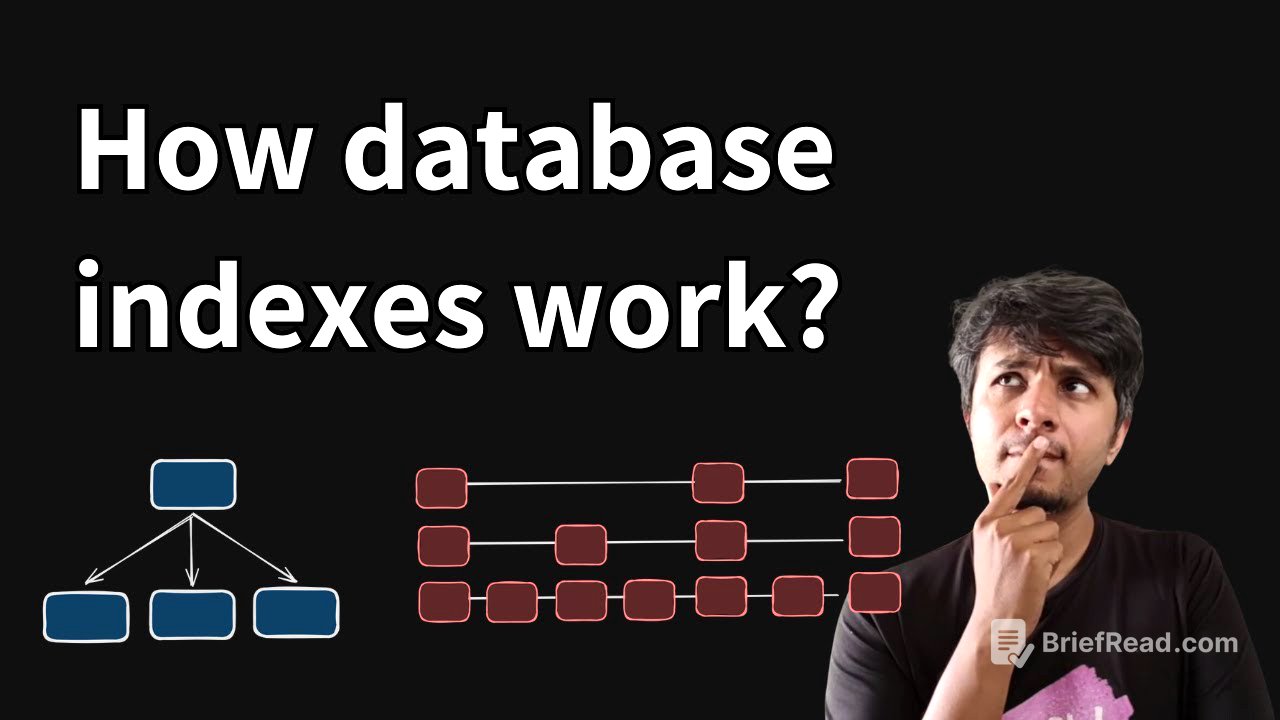TLDR;
This video explains how indexing makes databases faster by minimizing disk I/O operations. It uses a simple example of a users table with five columns to illustrate the concept. The video explains how data is stored on disk in blocks and how indexing helps to optimize queries by creating a mapping between indexed values and row IDs. The video concludes by emphasizing the importance of indexing for database performance and highlighting potential optimizations like multi-level indexing.
- Indexing minimizes disk I/O operations, making databases faster.
- Indexes are small referential tables that map indexed values to row IDs.
- Indexing can significantly improve query performance, potentially achieving 8x speedup.
Database Indexing Explained [0:00]
This video starts by explaining the basic concept of a database as a collection of records stored on disk. It then introduces the idea of sequential serialization, where records are stored in a linear fashion on the disk. The video uses a simple example of a users table with five columns (id, name, age, bio, total_blocks) to illustrate how each record takes up a certain amount of space on the disk.
Disk I/O and Blocks [3:15]
The video then explains how disk reads happen in blocks, which are consecutive units of data on the disk. It uses a hypothetical example of a block size of 600 bytes to demonstrate how reading a specific byte from the disk requires reading the entire block containing that byte. The video then shows how the users table is stored on disk in blocks, with three rows fitting into each block.
Indexing for Faster Queries [9:59]
The video introduces the concept of indexing as a way to speed up queries. It explains that an index is a small referential table that stores a mapping between indexed values and row IDs. The video uses the example of creating an index on the age column to demonstrate how the index is stored on disk as a two-column table with age and row ID.
Querying with an Index [13:18]
The video then shows how querying with an index can significantly improve performance. It uses the example of finding all users with age 23 to illustrate the process. The video explains that with an index, the database can first iterate through the index to find the relevant row IDs and then use those IDs to fetch the actual records from the main table. This process is much faster than iterating through the entire table sequentially.
Performance Gains and Optimizations [19:15]
The video concludes by comparing the time taken to answer the query with and without an index. It shows that using an index can result in a significant performance gain, potentially achieving an 8x speedup. The video also briefly discusses potential optimizations like multi-level indexing, which can further reduce the number of blocks that need to be read during a query. The video emphasizes the importance of indexing for database performance and encourages viewers to always consider indexing when designing queries.
